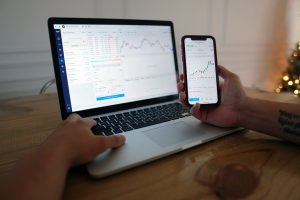Forex, or foreign exchange, is the largest financial market in the world. It is a decentralized market where traders can buy and sell currencies from around the globe. The forex market operates 24 hours a day, five days a week, and has a daily trading volume of over $5 trillion. One of the most common questions traders and investors ask is, “Why is there a forex difference?” In this article, we will explore the reasons why there is a forex difference.
The forex market is made up of various participants, including banks, institutional investors, hedge funds, retail traders, and other financial institutions. The participants buy and sell currencies based on a variety of factors, including economic data, geopolitical events, interest rates, and market sentiment. The forex market is also impacted by supply and demand, which can cause fluctuations in currency prices.
One of the primary reasons why there is a forex difference is due to the decentralized nature of the market. Unlike other financial markets, there is no central exchange where all trades are conducted. Instead, the forex market is a network of connected banks and financial institutions that trade currencies electronically.
Each bank or financial institution sets its own exchange rate for the currencies it trades. These exchange rates are based on a variety of factors, including the bank’s own trading volume, the liquidity of the currency, and other market conditions. As a result, there can be significant differences in exchange rates between banks and financial institutions.
Another reason why there is a forex difference is due to the bid-ask spread. The bid-ask spread is the difference between the price at which a currency can be bought and the price at which it can be sold. The bid price is the price at which a buyer is willing to pay for a currency, while the ask price is the price at which a seller is willing to sell a currency.
The bid-ask spread is determined by the liquidity of the currency and the market conditions. When there is high demand for a currency, the bid-ask spread tends to be narrower, which means the difference between the bid and ask price is smaller. Conversely, when there is low demand for a currency, the bid-ask spread tends to be wider, which means the difference between the bid and ask price is larger.
In addition to the bid-ask spread, there are also other fees and costs associated with forex trading. These fees can include commissions, spreads, and rollover fees. Each broker or financial institution sets its own fees and costs, which can also contribute to the forex difference.
Finally, the forex difference can also be impacted by economic and geopolitical events. When there is uncertainty or volatility in the market, traders may be more hesitant to buy or sell currencies, which can cause prices to fluctuate. For example, if there is a sudden change in interest rates or a major geopolitical event, such as a war or a natural disaster, the forex market may experience significant fluctuations in currency prices.
In conclusion, the forex difference is caused by a variety of factors, including the decentralized nature of the market, the bid-ask spread, fees and costs, and economic and geopolitical events. While these factors can cause fluctuations in currency prices, they also provide opportunities for traders and investors to profit from the market. By understanding the reasons behind the forex difference, traders can make informed decisions and take advantage of market conditions to maximize their profits.






